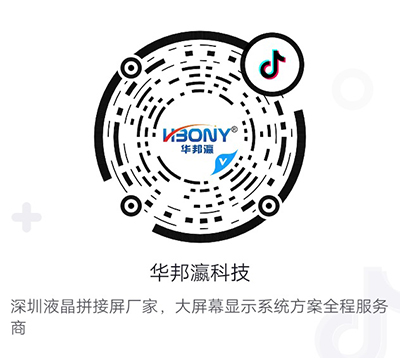-
- Solution
- Monitor
- Meeting
- Big Data
- Mall bar
- Stage stadium
- Creativity
 Solution
Solution -
 News
News -
- Service
- Service process
- After-sale service
 Service
Service -
- Video
- Company video
- Case video
.jpg) Video
Video




.jpg)
The latest, most popular and comprehensive intelligent business display product news information is presented for you
Release time:2020-08-07

We know that in the visible light range, yellow and cyan are monochromatic lights, and we already have high-saturation yellow and cyan LEDs. While purple is polychromatic light, single-chip purple LED does not exist. Although we can't achieve red, green, blue plus yellow, cyan, purple 3+3 multi-primary color LED display. However, it is feasible to study the red, green, blue plus yellow, cyan 3+2 multi-primary color LED display screens. Because there are a large number of high-saturation yellow and cyan colors in nature; therefore, this research is of certain value.
In the current various TV standards, the video source has only the three primary colors of red, green and blue, but not the two colors of yellow and cyan. So, how to drive the two primary colors of yellow and cyan display terminals?
In fact, when determining the driving strength of the two primary colors of yellow and cyan, we follow the following three principles:
1. While increasing the color saturation, the hue must not be changed;
2. The purpose of increasing the two primary colors of yellow and cyan is to expand the color gamut, thereby increasing the color saturation. The overall brightness value cannot be changed;
3. Take D65 as the center; take the RYGCB color gamut boundary as the end point, and linearly expand each point in the color gamut.
Under the guidance of the above three principles; according to the law of the center of gravity, we can find a 3+2 multi-primary color processing method. However, if we want to truly realize a 3+2 multi-primary full-color screen, we have to overcome difficulties such as insufficient brightness of the yellow and cyan LEDs, and greater cost increases, which are currently limited to theoretical discussions.
2. Color reduction processing:
With the birth of pure blue and pure green LEDs, full-color LED displays are sought after by the industry for their wide color gamut and high brightness. However, because the chromaticity coordinates of the red, green, and blue LEDs are quite different from the chromaticity coordinates of the red, green and blue of the PAL TV (see Table 1), the color reproduction of the LED full-color screen is poor. Especially when expressing human skin color, there are obvious deviations in vision. As a result, color reproduction processing technology came into being. Here the author recommends two color reproduction methods:
1. Carry out the color coordinate space transformation of the red, green and blue LEDs so that the color coordinates of the three primary colors between the LED and the PAL TV are as close as possible, thereby greatly improving the color reproduction of the LED display. However, this method greatly reduces the color gamut of the LED display screen, and greatly reduces the color saturation of the screen.
2. Only the skin color gamut that is most sensitive to the human eye is properly corrected; and the color gamut that is not sensitive to other human eyes is as little as possible to reduce the original color saturation. In this way, a balance can be achieved between color reproduction and color saturation.
3. Selection of primary color wavelength:
As people’s requirements for led displays are getting higher and higher, only subdividing and filtering the color coordinates of LEDs can no longer satisfy people’s critical eyes. Comprehensive correction of the display is performed to make the chromaticity uniform. The improvement is achievable.
We found that even the same grade of LEDs of the world's first brand has a large wavelength deviation and color saturation deviation, and the deviation range greatly exceeds the human eye's threshold for green color difference identification. Therefore, it is important to perform color uniformity correction. meaningful.
In the CIE1931 chromaticity diagram, according to the law of the center of gravity, we found that mixing a certain proportion of red and blue at any point in the G range (□abcd) can adjust the color coordinates of the mixed color to the straight line cR and The intersection point O of the straight line dB.
Although the chromaticity uniformity can be greatly improved. However, the color saturation after correction is significantly reduced. At the same time, another prerequisite for the use of red and blue to correct the uniformity of green chromaticity is that the three red, green and blue LEDs in the same pixel should be concentrated as much as possible to make the mixing distance of red, green and blue as close as possible to achieve better results. Effect. At present, the LED uniform distribution method is commonly used in the industry, which will bring confusion to the chromaticity uniformity correction. In addition, how to measure the color coordinates of tens of thousands of red, green and blue LEDs is also a very difficult problem. We gave a hint about this.
4. Chromaticity uniformity treatment:
The chromaticity uniformity of the led display has always been a major problem that plagues the industry. It is generally believed that the uneven brightness of the LED can be corrected by a single point to improve the brightness uniformity. The uneven chromaticity cannot be corrected, and can only be improved by subdividing and filtering the LED color coordinates.
Five, the deployment of white field color coordinates:
White field color coordinate adjustment is one of the most basic technologies for full-color LED displays. However, in the mid-1990s, due to the lack of industry standards and basic testing methods, the white-field color coordinates were usually determined by human eyes and sensations, resulting in serious color cast and randomness of white-field color temperature. With the promulgation of industry standards and the completion of testing methods, many manufacturers have begun to standardize the color matching process for full-color screens. However, due to the lack of theoretical guidance for color matching, some manufacturers often adjust the color coordinates of 100 fields at the expense of gray levels of certain primary colors, and the overall performance cannot be improved.

Then, based on the above, three aspects of the LED display color processing technology are mainly discussed:
1. How to improve the chromaticity uniformity of the led display;
2. How to expand the color gamut and restore more natural colors;
3. How to improve the color reproduction of the led display;
The above-mentioned chromaticity processing technologies are all related to each other in the specific implementation, and some aspects are not even compatible with fish and bear paws. The integrated LED display screen also needs to perform brightness uniformity correction, grayscale nonlinear transformation, noise reduction processing, image enhancement processing, dynamic pixel processing, etc., and the entire signal processing process is very complicated. Therefore, we must comprehensively weigh various performances from the perspective of the system, grasp the sequence of various processing, and increase the depth of signal processing, so that the full-color LED display can show a colorful and colorful world.
Various industries have a very wide range of applications, and different application places have different requirements for the wavelength of the primary color of the LED. Some of the wavelengths of the primary color of the LED are selected for good visual effects, some are for people’s habits, and some It is also stipulated by industry standards, national standards and even international standards.
For example, the choice of the primary color wavelength of the green tube in a full-color LED display; in the early days, people generally used a yellow-green LED with a wavelength of 570nm. Although the cost is low, the color gamut of the display is small, the color reproduction is poor, and the brightness is low. After choosing a pure green tube with a wavelength of 525nm, the color gamut of the display has nearly doubled, and the color reproduction has been greatly improved, which greatly improves the visual effect of the display. For another example, on the stock market display screen, people are usually accustomed to using red to indicate stock price increases, green to indicate stock prices falling, and yellow to indicate flat prices. In the transportation industry, the national standards strictly stipulate that the blue and green bands are for traffic and the red band is forbidden. Therefore, the choice of primary color wavelength is one of the important links of led display screen.
"Conclusion" LED display chromaticity processing technology is actually only one of the many technical parameters of LED display. Although we may not be able to understand it, a preliminary understanding is still necessary, regardless of whether you are in the LED display industry or the customer There is always no harm in knowing more about product technology.
2025-07-15 Huabangying Optoelectronics
2025-06-10 Huabangying Optoelectronics
2025-05-14 Huabangying Optoelectronics
2025-04-10 Huabangying Optoelectronics
2025-03-05 Huabangying Optoelectronics
2025-02-12 Huabangying Optoelectronics
Links:



